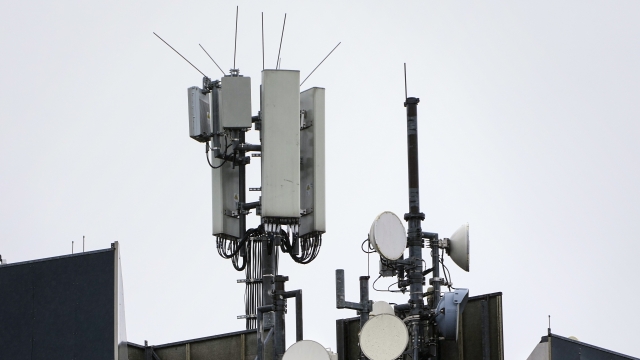Few recent technologies have gotten more hype than 5G, but as tech YouTuber Luke Miani points out, just finding the fastest 5G signals on your phone can be challenging.
"We're only getting 20 megabits per second now because we've got a lot of this sort of marble archway here," Miani said. "There’s 200 — it’s very inconsistent. Now we’re getting a pretty solid 300, just five feet difference. That’s all it takes. We’re now getting close to 500."
500 megabits per second is fast enough to download a two-hour movie on Netflix in about a minute. 5G’s highest speeds could lay the groundwork for driverless cars communicating with one another, or for exploring the metaverse on mobile devices. "5G" refers to the 5th generation of cellular network technology launched in the U.S. in 2018. But tech YouTuber Marques Brownlee says it’s nowhere near its potential yet.
"5G right now is worse than 4G. It’s slower. It’s less consistent. And it’s more expensive," Brownlee said.
So how did we get here? 1G, or first-generation cellular service, began in 1979. Developers used analog signals, prone to noise, advertised by Motorola.
2G cell service arrived in 1991, bringing digital signals to phones by Nokia. 3G internet allowed more data and 4G LTE, the most common cellular standard in the U.S., brought mobile apps, video and internet.
Today, there are more than 900 million devices worldwide on 5G, and more than 108 million subscribers in the U.S., but the technology is prone to challenges.
"There are a lot more 5G connection access points than you would normally have for 4G LTE. If you go on the highway, you see those big towers that look like trees. Most of those are 4G. They cover a very large area. But because 5G is so dependent on line of sight, you need a lot more antennas at a lot closer range," Miani said.
Miani says that lower range means coverage can be spotty, and can vary by wireless provider.
SEE MORE: Verizon And AT&T Reach Deal With The FAA On 5G
"The cell tower over there was ultra wideband only for T-Mobile. So my phone being on Verizon was getting about a third of the speed in the same exact location," Miani said.
And the signals are blocked a lot more easily than 4G ones.
"When we're being blocked by this statue, I'm only getting 30 to 40. Okay, we're jumping up to 70. But that's still compared to 500 just a few feet away," Miani said.
Not only does 5G require more antennas, but 5G antennas can operate at frequencies as high as 53 gigahertz, much higher than 4G LTE’s maximum 2.3 gigahertz. That’s led to health concerns. The European Union has set specific exposure limits for 5G signals. The U.S. has so far stuck to limits established for previous generations of cell technology.
A review published in the Journal of Exposure Science and Environmental Epidemiology found "no confirmed evidence" showing 5G signals are dangerous.
Opponents of the technology have burned dozens of 5G towers worldwide, and a protest in 2020 in New South Wales, Australia led to one arrest.
And in Wyandotte, Michigan, a superintendent was forced to resign after parents objected to a 5G antenna installed on an elementary school.
"That tower is directly outside my classroom and I look at it every day. I am in fear for my grandchild who is in the building. I am in fear of my neighbors' children who are in the building ... I am in fear for myself, and my colleagues," said Denise Knapp, a teacher at Washington Elementary.
The antenna still sits on the school, but it’s not on.
Both the hardware and software technology driving 5G have raised security concerns.
The U.S. and eight other countries banned the use of equipment by Chinese companies Huawei and ZTE for 5G networks.
"Equipment from certain vendors such as Huawei and ZTE poses a national security risk. Enemies of the United States have the capability of using this compromised equipment to spy on Americans, steal our intellectual property, and otherwise disrupt our way of life and economic wellbeing," said Sen. Roger Wicker.
"Given the threats posed by Huawei and ZTE to America’s security and our 5G future, this FCC will not sit idly by and hope for the best," said Ajit Pai, chairman of the FCC.
For all its challenges, 5G promises a world more connected than ever, but given the risks, it may be one including new barriers — and not just barriers to getting that coveted signal.
Trending stories at Scrippsnews.com



